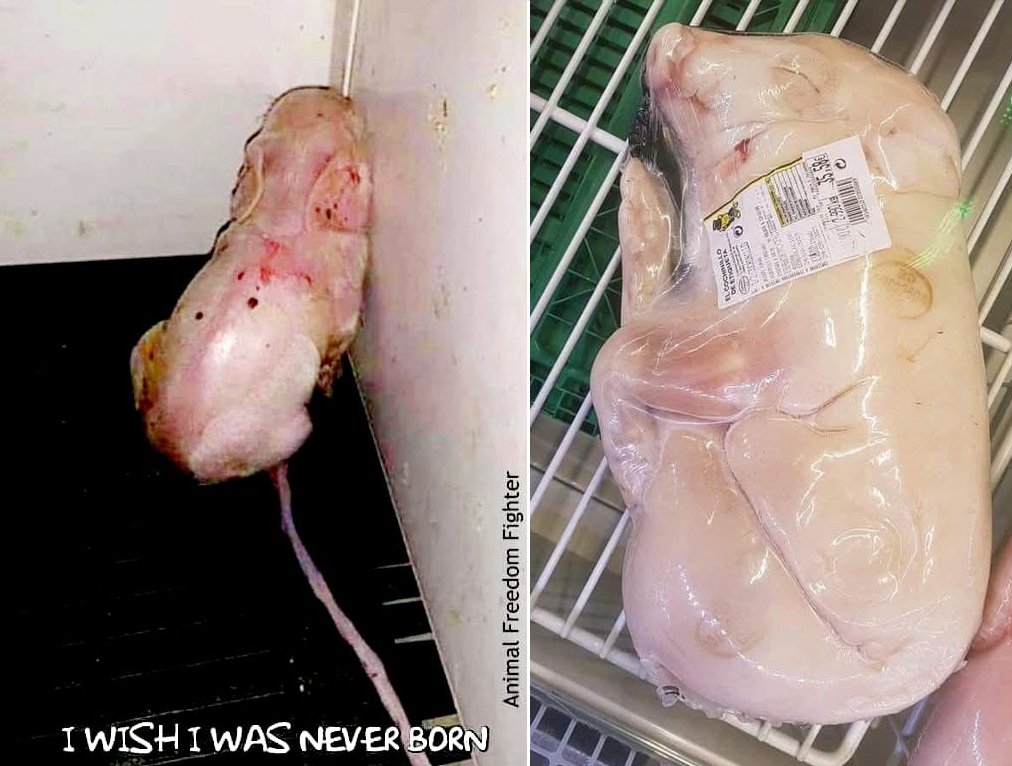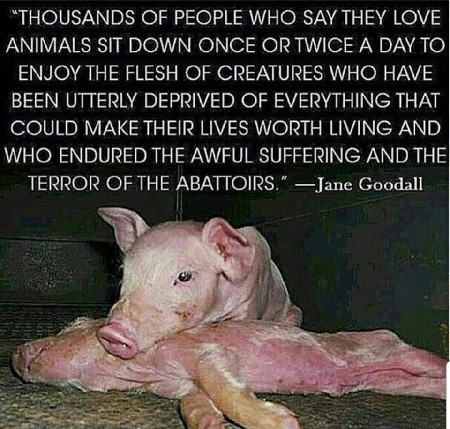The Myth of ‘Slachtvisite’
There's something oddly unsettling about the word slachtvisite (a Dutch gathering where people observe the carving of a slaughtered animal, often framed as a cultural or festive event) - as if it's something cozy. A cup of coffee, a slice of cake, and a pleasant get-together around… a dead animal. In the village of Enter, this tradition is apparently still "honored," and in a lightly framed segment of Overijsselse Streken, we see children curiously observing carcasses. No blood. No thrashing. No screams. No fear of death. Just the end result: a body, already lifeless, neatly prepared for consumption.
But let's be honest: this romanticized image has nothing to do with slaughter.
Slaughter doesn't happen at a clean kitchen table. Slaughter isn't a village tradition for a lazy Sunday afternoon. Slaughter is the moment when a living animal, often panicked, is pushed, kicked, or dragged into the slaughterhouse. It's the smell of fear, the sound of stress, the cold metal floor beneath trembling legs. Slaughter is the blade cutting through the throat while the heart is still beating - so the blood drains properly. It's industrial death at a pace no tradition can keep up with.
Let's face it: most people who eat meat have never seen an animal die. The steak on the plate, the sausage on the BBQ - that's not slaughter. That's eating. What we call slachtvisite is, in fact, a kind of meat celebration after the fact — a performance with the first act conveniently omitted.
In the comments, you often hear: "It's good these traditions still exist - at least kids learn where meat comes from." But if that's truly the goal, then show them the slaughterhouse. The real slaughter. Not the carving of what's already dead, but the moment when life turns into death. Because believe me: the kids will look very differently then. It won't be a party. It might become a moral question.
So yes, if you want to show the reality of meat, start at the beginning. And don't call it slachtvisite. Call it what it is: a tribute to forgotten discomfort. A carefully chosen illusion, meant to soothe our conscience.
But not slaughter.
"The chickens hang there and look at you while they are bleeding. They try to hide their head from you by sticking it under the wing of the chicken next to them on the slaughter line. You can tell by them looking at you, they're scared to death." ~ Virgil Butler, former Tyson chicken slaughterhouse worker

